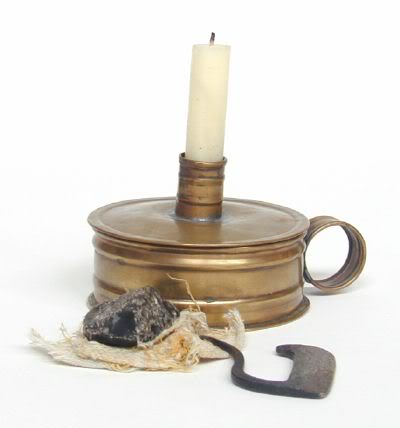-
This community needs YOUR help today. We rely 100% on Supporting Memberships to fund our efforts. With the ever increasing fees of everything, we need help. We need more Supporting Members, today. Please invest back into this community. I will ship a few decals too in addition to all the account perks you get.

Sign up here: https://www.muzzleloadingforum.com/account/upgrades -
Friends, our 2nd Amendment rights are always under attack and the NRA has been a constant for decades in helping fight that fight.
We have partnered with the NRA to offer you a discount on membership and Muzzleloading Forum gets a small percentage too of each membership, so you are supporting both the NRA and us.
Use this link to sign up please; https://membership.nra.org/recruiters/join/XR045103
You are using an out of date browser. It may not display this or other websites correctly.
You should upgrade or use an alternative browser.
You should upgrade or use an alternative browser.
Burning a candle
- Thread starter Flint50
- Start date

Help Support Muzzleloading Forum:
This site may earn a commission from merchant affiliate
links, including eBay, Amazon, and others.
I hate to be generic, but... it depends. For someone with a lower socioeconomic status, a candle would have been a luxury item - betty lamps (ie, grease lamps) and tallow/lard dipped pithy stems/reeds would have been the order of the day. Moving up, tallow candles (MESSY!), and then wax candles. There were a variety of ways to hold candles, but they boil down to Open or Enclosed. Open would be any of the candle holders of wood or metal that simply held the candle upright, but did not protect the flame - could have a cup or a spike, plain or fancy. Enclosed means the candle is protected - usually by glass or punched tin (and, I have read, horn and mica - but I personally don't have any good references on these... can anyone else out there help?). Obviously open holders were less expensive than a fine glass-enclosed candle lantern, especially one with a mirrored surface in the back... so take your pick: anything from a cup or spike up to a fancy glass and mirrored candle lantern - depends on who you were, and where, in the 1700s. If you're looking for a middle of the road approach a small/medium punched tin candle lantern is a good choice - not as fancy (or breakable!) as a lantern with glass panes, but easier and safer to manage in camp or buildings than open flame...
M
M
I have pic of a candle holder of brass, that had a tin underneath for storing flint and striker....
Tried to post it, but get weird error messages.
Asked about errors, and will post the pic when there straightened out...
Legion
Tried to post it, but get weird error messages.
Asked about errors, and will post the pic when there straightened out...
Legion
I have no idea whether this is PC for our time periods but years ago some Indians in the Canadian Far North would take a stick and split the end twice(four sections) and stick a candle inbetween the sections. The other end of the candle was stuck in the ground. Obviously you must do this inside a draft free tent with a ground floor.
marmot said:(and, I have read, horn and mica - but I personally don't have any good references on these... can anyone else out there help?).
Yep, was at Sturbridge village a week and a half ago. went into their "Lighting" display (it was a whole building) and there was one display case full of candle lanterns. One had thin-scraped horn for the panes. I also had heard of this, as well as mica, but this was the first I remember seeing.
-Riley
TMA Charter Member #20
TMA MN State Rep
The term Lantern comes from the word LATHORN which referred to the flat thin panels of cows horn that were set into the sides of what we now call a lantern. This allowed light to shine through from the candle inside - a warm glow that was good enough to move about a room. If you wanted more light, you openned the door so that the candle light shined directly out. Glass was expensive, and fragile. Horn was cheap and fairly sturdy. So it was used for many things, including the panels on the sides of a "lantern".
Similarily, glass panes for windows were also very expensive. So windows tended to be small, and many were covered with thin rawhide - from sheep, goats, or deer. It allows light to filter in during the day. For more light, you openned the window.
So horn panels in lanterns go way back into the Middle Ages and earlier. And they were a common "frontier" alternative to glass.
Of course, these are but my humble opinions, and best used in conjunction with your own research.
yhs
Mike Ameling
Similarily, glass panes for windows were also very expensive. So windows tended to be small, and many were covered with thin rawhide - from sheep, goats, or deer. It allows light to filter in during the day. For more light, you openned the window.
So horn panels in lanterns go way back into the Middle Ages and earlier. And they were a common "frontier" alternative to glass.
Of course, these are but my humble opinions, and best used in conjunction with your own research.
yhs
Mike Ameling
Mike, I recall that early New England schools featured "horn books", flat sheets of thin horn overlaying paper printed material to protect it, pretty much the way we would today use a plastic overlay...and, I've heard the "lant horn" explanantion too..Hank
Similar threads
- Locked
- Replies
- 0
- Views
- 190
- Replies
- 8
- Views
- 428
- Replies
- 8
- Views
- 936




